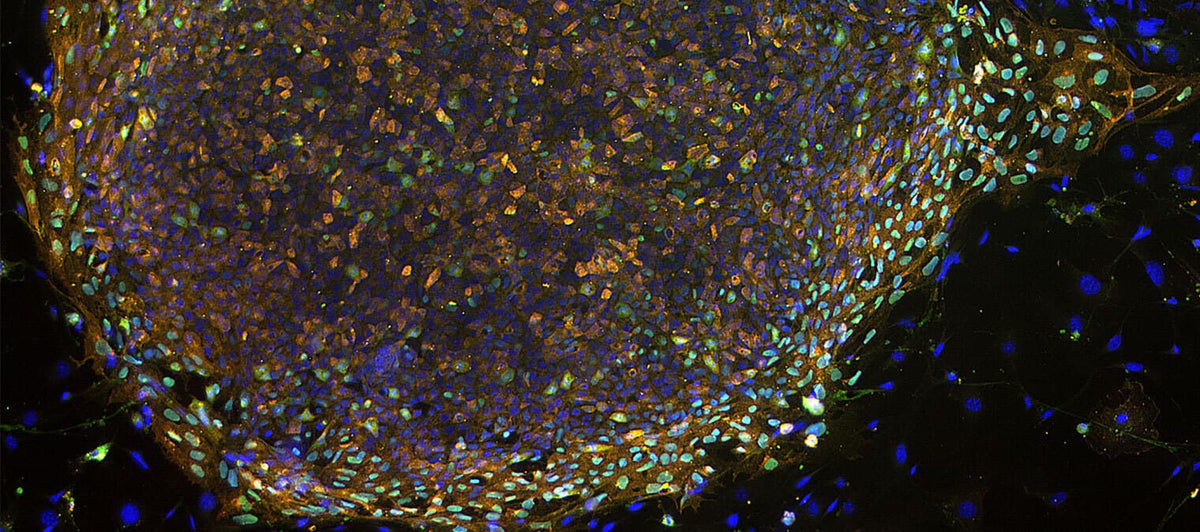Meet your stem cells
Read more
What are stem cells and what are some of the major breakthroughs in stem cell research? Find out here.
Calculated at checkout
$0.00 USD

What are stem cells and what are some of the major breakthroughs in stem cell research? Find out here.
The trillions of cells in your body all have very specific roles to fulfill. They may be utterly dedicated to your retina, a neuron in the brain, or even growing hairs on your big toe! But all of this starts with your body’s raw materials: your stem cells. These “master” cells have almost unlimited potential to become any cell that the body needs. Stem cell technologies are widely studied in research and are used in medicine where they act as regenerative cells, able to repair and regrow damaged tissues. You even harbor natural reserves of adult stem cells that help you repair and regenerate without having to lift a finger.
However, with age, your stem cells can start to deteriorate and decline. That’s where supporting your cell health becomes so important – if you can keep your body’s building blocks healthy, you’ll enable your mind and body to enjoy a full, healthy life.
Your body produces stem cells throughout your life. These are cells without a role yet; they are undivided, meaning they have the potential to become (almost) any cell type. Stem cells develop from the moment an egg is fertilized – this, in fact, being the ultimate stem cell – and generously, they still stick around after that, where they can divide to repair and regenerate your body’s tissues. In fact, the reason your wounds heal or your liver recovers from damage comes down to the work of stem cells.
Stem cells are pretty widespread, but they can lie dormant in tissues for years, tucked away from observation until the body calls them to action for fixing or growing new tissues. Stem cells have been found in the brain, bone marrow, blood, skin, liver, and skeletal muscles. They tend to exist in small numbers in most adult tissues. As we will see, stem cells are also found in embryos.
There are two major types of stem cells: embryonic stem cells and adult stem cells. Embryonic stem cells come from the blastocyst – a ball of about 150 cells that forms after an egg is fertilized. Embryonic stem cells can turn into any type of cell the body needs, meaning they are super versatile and helpful for regenerating new tissues or organs.
Adult stem cells encompass all the stem cells that exist after the embryonic stage. While these cells are still undifferentiated (not specific to a role), they’re slightly more specialized than embryonic stem cells. They cannot turn into absolutely anything, like embryonic stem cells can. They may be categorized into the following cell types:
Hematopoietic stem cells are currently the most studied and most commonly used stem cells in medicine. For example, cancer patients may need hematopoietic stem cells supplied via bone marrow transplant to help their body make new blood cells after chemotherapy and radiation kill their hematopoietic stem cells. Over 50,000 of these bone marrow transplants are now performed each year, worldwide.
Researchers believed that stem cells would always create similar cells – for example, that stem cells in the skin would only develop into skin cells. It turns out that may not be true and stem cells may create different cell types, like bone marrow stem cells turning into neurons.
Stem cell research has come a long way in the past 60 years since their discovery. There is lots of fantastic evidence out there on the amazing feats medicine can accomplish with stem cells.
These are three examples of the latest game-changing breakthroughs in stem cell research:

There is a direct link between mitochondrial function and stem cell function. Mitochondria help to determine the ‘fate’ of a given stem cell, in terms of what kind of cell it will eventually turn into. These findings have been a huge turning point in the field of stem cell research.
Problems with your mitochondria could affect your stem cells. Since mitochondria have a part to play in regulating stem cell activity, any age-related declines in stem cell mitochondria may also affect repair and regeneration by stem cells in many tissues.
You can help take charge of your health by boosting the mitochondria that are so crucial to your stem cells. MitoQ may assist in your stem cell health by fighting free radicals to keep your mitochondria healthy and working smoothly. Think of you and MitoQ as life partners; as you age and your stem cells face all the stressors that come with life, MitoQ is the best sidekick to support a healthy balance in your mitochondria.
Preliminary research has suggested there may be benefits of MitoQ for MSC differentiation in bone tissue and for HSC function. Oxidative stress can be harmful to the genetic information in stem cells, especially the mitochondrial DNA. By targeting oxidative stress, it’s possible MitoQ may be able to help , support healthy stem cells, aid in mitochondrial health, and help preserve their function in transplant. It all starts with you. Incorporate MitoQ into your lifestyle to support your cell health now and beyond. Try our breakthrough MitoQ formula so you can build a strong foundation.

Health & Nutrition | MitoQ | Products & Ingredients
Discover effective energy supplements tailored for women to fight fatigue and enhance vitality. Boost your energy today—read the article now!
Nov 6, 2025

Antioxidant Science | Health & Nutrition | MitoQ
Discover the best energy supplements for women over 50 to enhance vitality and well-being. Read on to find the perfect boost for your lifestyle!
Nov 5, 2025 |8 mins to read